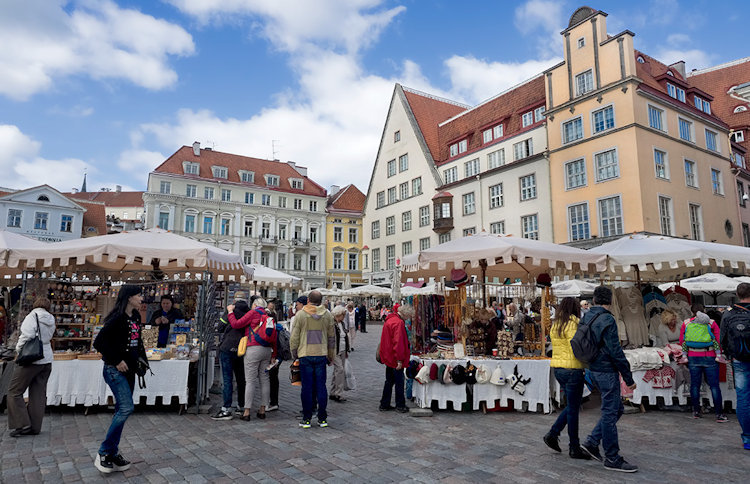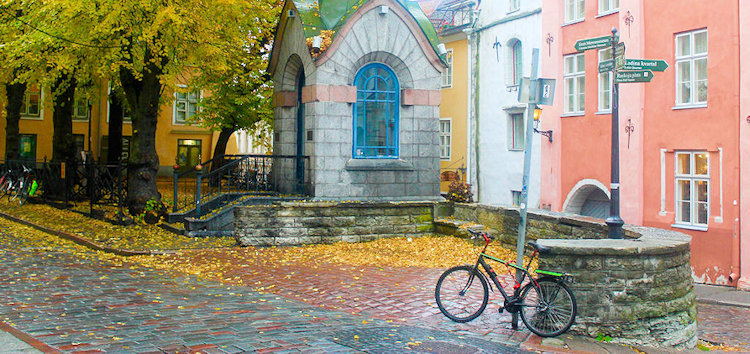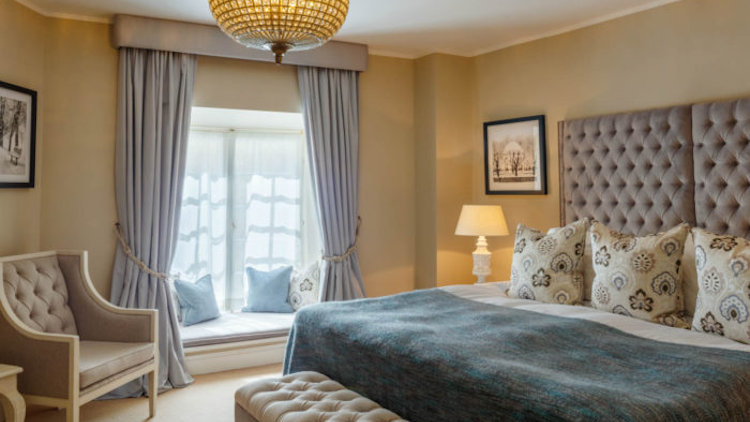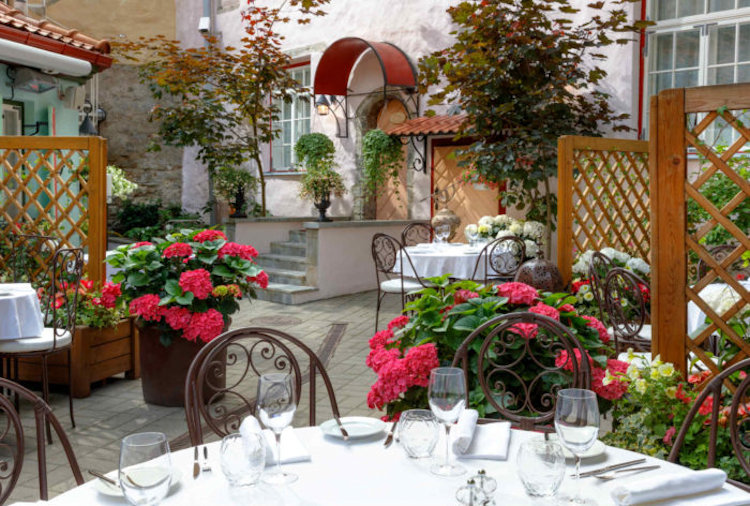Estonia: An Historic and Architectural Treasure

There are no distant places in Estonia, a country bordered by Finland, the Baltic Sea, Latvia and Russia. You can travel from one end of the country to the other in just four or five hours. Its small size translates to short distances so you can squeeze in lots of sightseeing and activities in a short amount of time. But make no mistake – Estonia is larger on the inside than on the outside with a vast variety of landscapes, seasons, weather and character within a few dozen miles. Yet, touring the country, I never felt crowded or claustrophobic. With a size comparable to, say, Denmark or Holland, there are far fewer inhabitants – a mere 1.3 million in the entire country.
Estonians have endured occupiers for the past 800 years from Teutonic knights, Danish and Swedish conquerors, Russian Tsars, German Nazis as well as the Red Army. Now independent, the country was occupied by the Soviet Union from 1944 to 1991. Tallinn, the country’s capital, is the best preserved medieval city in Europe with an original street system dating from the 13th century and houses, buildings and churches all still intact.


Everything Old is New Again
Known as the “Pearl of the Baltics,” my introduction to Estonia was a tour of Tallinn’s Old Town, a UNESCO World Heritage site. It’s a mysterious place with narrow cobblestone lanes, ancient city walls, iron street lamps, Gothic turrets and medieval markets. Built from the 13th to 16th centuries when Tallinn was a thriving member of the Hanseatic trade league, this enclosed neighborhood of colorful gabled houses, Guild buildings and hidden courtyards is the city’s biggest tourist draw. All neatly packaged within the city’s walls, its high towers give it an extra dose of fairytale charm and looming overall, the spire of the Gothic 15th century St. Olaf’s Church.
We had lunch in the 13th century restaurant, Olde Hansa. Egon, our waiter, was dressed in authentic garb, and insisted that before we ate we should make a blessing, breaking a loaf of dark bread into small pieces and sprinkling it with salt. Our table was laden with aspic, olives, pickled cucumbers, berries, soft cheese, lentils, turnips, chicken and pork – truly a meal fit for – a Viking?
Finishing this bountiful repast, we were joined by a young man dressed as a medieval merchant who guided us through the town, stopping at a brewery where an elderly gentleman sat in the corner playing a haunting melody on a wheel fiddle, bringing to mind the Hurdy Gurdy man of Schubert’s Winterreise. As we listened to this poignant melody, we were further warmed with steaming cups of rich hot chocolate, a most welcome treat.


Rest, Beautiful Rest
After a very full first day and fighting some jet lag, it was a treat to retire to a luxe boutique hotel, the Schlossle. Situated in the very heart of Old Town, it was amusing to be housed in a medieval edifice that could, and did, cater to one’s every whim in a modern, professional fashion. As I sank into the jolly white cloud that was my bed, I allowed myself to drift off dreaming of – what else – A knight in white armour coming to see if all was well. (It was).
Island Hopping
One day we took a ferry to Muhu Island and from there a causeway to Saaremaa Island about 125 miles from the mainland and Estonia’s largest island. We toured Kuressaare, the capital, and that evening had dinner in the Episcopal Castle which dates back to the 13th century and is one of the best preserved castles in northern Europe. The entire meal was one huge medieval adventure, and I’m sure I’ll never experience another quite like it. Upon entering, we were greeted by the “bishop” who led us into a grand banquet hall, our only light being hundreds of flickering candles. There before us, a heavy wooden table groaning with food. We were served a repast typical of the period: dark, thick beef soup, black bread, nuts, berries, a huge leg of lamb, bowls overflowing with barley and plates of ham, juniper cheese, jellied meat and of course ale, lots of ale! To make the experience authentic, we ate with wooden spoons and forks from dishes made of rough earthenware. Throughout the evening, we were serenaded with the greatest hits of the 1300s - soft music of harps and violins - putting the perfect finishing note to this culinary adventure.

Chiaroscuro Vivant
We strolled back to our hotel through a park – a winter wonderland with a silver moon lighting our way. It was very cold, the sky milky and cloudless, the air so crisp it stung our nostrils. The path was cobblestoned, glassy and smooth, so choosing to be safe I walked on snow crunching and squeaking beneath my feet. Across the park, near a frozen moat, I watched a lone man trudge along as his small dog scampered around his legs, his silhouette black against the white snow. I tried to imagine this park in summer when all would be leafy green and warm breezes. Yet, as I watched my breath form, I knew that, for me, this was the perfect time to be here.
A Nation of Song and Dance
Estonia’s most famous event by far is the National Song and Dance Festival. The event has choral singers, 26,000 strong, performing for an audience numbering in the tens of thousands. UNESCO recognizes this as a Masterpiece of the Oral and Intangible Heritage of Humanity. This spectacular happening kicks off with a parade through the city from the center of Tallinn to the Song and Dance Festival Grounds, and the Festival will happen again on Friday, July 5 through Sunday, July 8, 2019. Make note that each summer the country plays host to numerous terrific events including Tallinn Old Town Days, Medieval Tallinn Festival, Black Nights Film Festival, and the Jazz Festival among many others. Winter, summer, anytime - Estonia is a destination for all seasons.

No comments:
Post a Comment